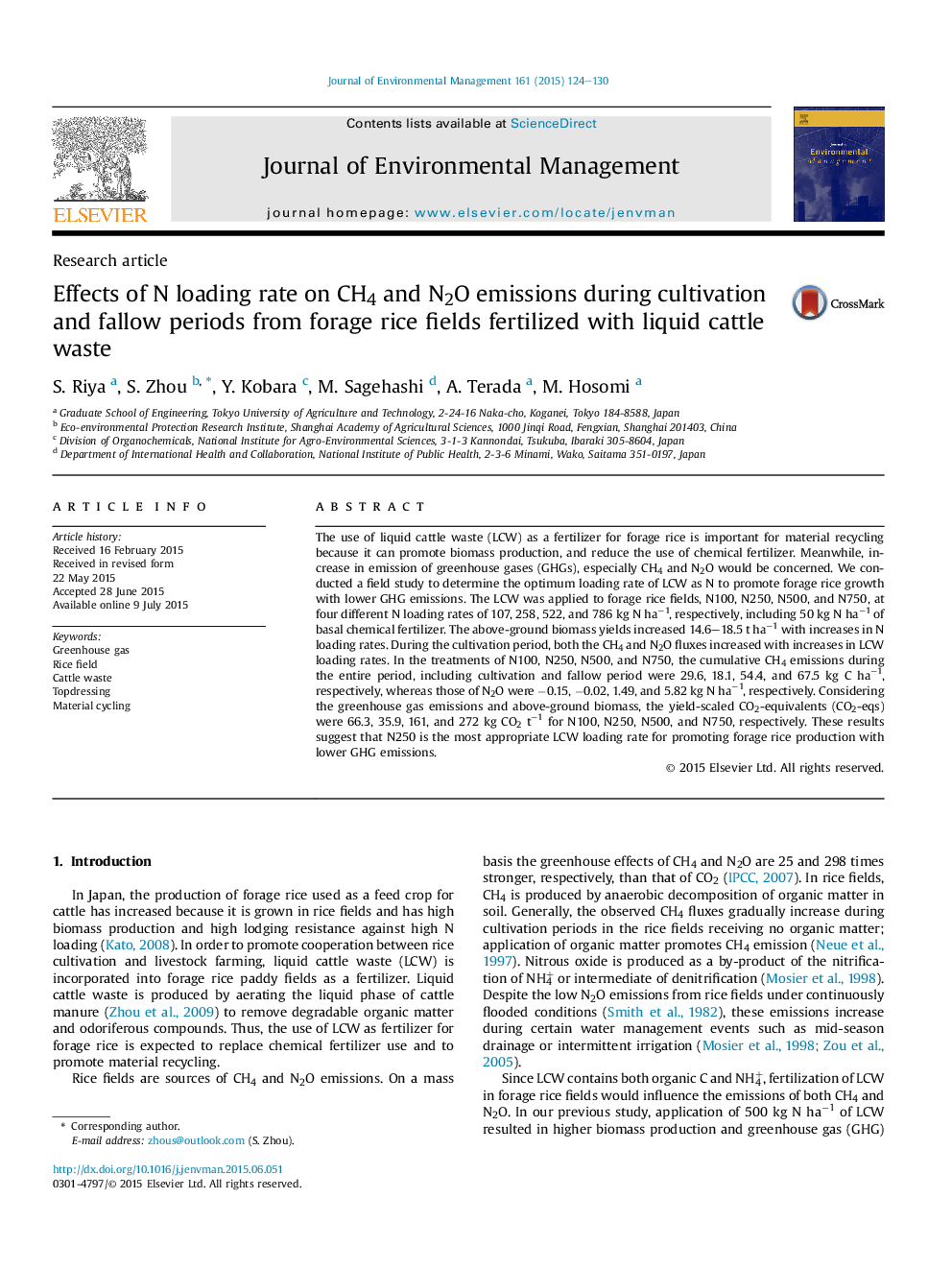| Article ID | Journal | Published Year | Pages | File Type |
|---|---|---|---|---|
| 7481605 | Journal of Environmental Management | 2015 | 7 Pages |
Abstract
The use of liquid cattle waste (LCW) as a fertilizer for forage rice is important for material recycling because it can promote biomass production, and reduce the use of chemical fertilizer. Meanwhile, increase in emission of greenhouse gases (GHGs), especially CH4 and N2O would be concerned. We conducted a field study to determine the optimum loading rate of LCW as N to promote forage rice growth with lower GHG emissions. The LCW was applied to forage rice fields, N100, N250, N500, and N750, at four different N loading rates of 107, 258, 522, and 786 kg N haâ1, respectively, including 50 kg N haâ1 of basal chemical fertilizer. The above-ground biomass yields increased 14.6-18.5 t haâ1 with increases in N loading rates. During the cultivation period, both the CH4 and N2O fluxes increased with increases in LCW loading rates. In the treatments of N100, N250, N500, and N750, the cumulative CH4 emissions during the entire period, including cultivation and fallow period were 29.6, 18.1, 54.4, and 67.5 kg C haâ1, respectively, whereas those of N2O were â0.15, â0.02, 1.49, and 5.82 kg N haâ1, respectively. Considering the greenhouse gas emissions and above-ground biomass, the yield-scaled CO2-equivalents (CO2-eqs) were 66.3, 35.9, 161, and 272 kg CO2 tâ1 for N100, N250, N500, and N750, respectively. These results suggest that N250 is the most appropriate LCW loading rate for promoting forage rice production with lower GHG emissions.
Related Topics
Physical Sciences and Engineering
Energy
Renewable Energy, Sustainability and the Environment
Authors
S. Riya, S. Zhou, Y. Kobara, M. Sagehashi, A. Terada, M. Hosomi,
